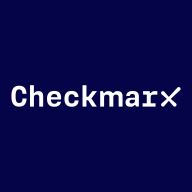

SonarQube and Checkmarx SAST are competing products in static application security testing. Checkmarx SAST has the advantage in comprehensive security features, appealing to security-focused organizations, while SonarQube excels in user-friendly integration with DevOps processes, attracting customers seeking seamless deployment.
Features:SonarQube offers continuous code inspection, real-time feedback during code review, and integration with various DevOps toolchains. Checkmarx SAST provides robust security analysis, a vast vulnerability database, and strong customization options for security policies.
Room for Improvement:SonarQube can enhance its vulnerability detection and improve licensing for dynamic cloud environments. Checkmarx SAST could work on simplifying initial setup, refining integration with certain DevOps tools, and offering more flexible pricing options.
Ease of Deployment and Customer Service:SonarQube is easier to deploy with seamless integration into development environments and robust community support. Checkmarx SAST requires more initial setup but offers effective customer service that assists in overcoming deployment challenges.
Pricing and ROI:SonarQube has lower setup costs and favorable ROI for teams focused on code quality. Checkmarx SAST, despite higher initial expenses, provides high-value security scanning and promises better ROI for security-focused organizations over time.
| Product | Market Share (%) |
|---|---|
| SonarQube Server (formerly SonarQube) | 18.6% |
| Checkmarx SAST | 1.5% |
| Other | 79.9% |


| Company Size | Count |
|---|---|
| Small Business | 41 |
| Midsize Enterprise | 24 |
| Large Enterprise | 79 |
Checkmarx SAST provides advanced static application security testing by identifying vulnerabilities in source code. It's ideal for ISOs, security professionals, and developers striving to secure applications during development.
Checkmarx SAST is known for its powerful code scanning capabilities that integrate seamlessly into existing development environments. It supports a wide range of programming languages, which makes it applicable for diverse development projects. Some users suggest improvements in the scan performance speed and enhanced support in handling false positives to further optimize workflow efficiency.
What are the standout features of Checkmarx SAST?Implemented across various industries, Checkmarx SAST supports sectors like finance, healthcare, and technology with their stringent security requirements. By integrating seamlessly into existing workflows, it ensures that applications remain secure while not disrupting industry-specific processes.
SonarQube provides comprehensive support for multi-language development, custom coding rules, and quality gates, integrated seamlessly into CI/CD pipelines. It empowers teams with clear insights through intuitive dashboards, identifying vulnerabilities, code smells, and technical debt.
SonarQube is renowned for its extensive capabilities in static code analysis, making it an invaluable tool for maintaining code quality. By fully integrating into development processes, it allows organizations to manage vulnerabilities and ensure compliance with coding standards. Its extensive community and open-source roots contribute to its accessibility, while robust dashboards facilitate code quality monitoring. Despite its strengths, feedback suggests enhancing analysis speed, better integration with DevOps tools, and refining the user interface. Users also point to the need for handling false positives effectively and expanding on AI-based features for dynamic code analysis.
What are SonarQube's main features?In industries like finance and healthcare, SonarQube aids in obtaining regulatory compliance through rigorous code quality assessments. It is implemented to enhance cybersecurity by identifying potential vulnerabilities, while ensuring code meets the stringent standards demanded in these fields. As part of a broader development ecosystem, its integration in CI/CD pipelines ensures smooth and efficient software delivery, catering to phases from code inception to deployment, effectively supporting large-scale and critical software applications.
We monitor all Static Application Security Testing (SAST) reviews to prevent fraudulent reviews and keep review quality high. We do not post reviews by company employees or direct competitors. We validate each review for authenticity via cross-reference with LinkedIn, and personal follow-up with the reviewer when necessary.